This article was co-authored by Miguel Cunha, DPM. Dr. Miguel Cunha is the founder of Gotham Footcare and is a podiatrist based in Manhattan, New York. Dr. Cunha is a foot and ankle surgeon with experience treating a wide array of foot and ankle conditions from minor problems to complex reconstructive foot and ankle surgery. Dr. Cunha received his DPM from the Temple University School of Podiatric Medicine and completed his residency as the Chief Resident at the Washington Hospital Center and Georgetown University where he specialized in lower extremity trauma, diabetic limb salvage, and reconstructive surgery of the foot and ankle. Dr. Cunha is a member of the American Podiatric Medical Association, the New York Podiatric Medical Association, the American College of Foot and Ankle Surgeons, and is board certified in Podiatric Medicine.
There are 11 references cited in this article, which can be found at the bottom of the page.
This article has been viewed 13,979 times.
Whether you dance, play a sport, or stand for long periods at work or school, your feet are prone to lots of wear and tear. Fortunately, regular stretching can help keep your feet healthy and offer relief for conditions such as plantar fasciitis.[1] Each day, stretch your toes, arches, and heels to release tension and improve your flexibility. While stretching is beneficial for most people, be sure to check with your doctor first if you have a history of bone, joint, or other medical issues.
Steps
Targeting Your Toes
-
1Thread your fingers between your toes for 30 to 60 seconds. While sitting, raise your right foot, rest it on your left thigh, and interlace the fingers of your left hand with your right toes. Move your fingers between your toes until the base of your fingers meets the base of your toes. Feel the tension in your toe joints release as you hold the stretch for 30 to 60 seconds.[2]
- Repeat the steps and thread your right fingers through your left toes. Do a total of 2 to 4 finger threading stretches to relieve stiffness in your toe joints, balls of your feet, and fronts of your arches.
- Daily stretching is often beneficial and, for plantar fasciitis and other bone and joint issues, necessary. Try, for instance, threading your toes, rotating your ankles, and stretching your heels for 3 to 5 minutes before getting out of bed to get your feet ready for the day.
- While light, daily stretching is usually fine, ask your doctor or physical therapist how often you should stretch your feet, especially if you have bone, joint, or any other health issues.
-
2Pull your toes up and back for 15 to 30 seconds at a time. Sit in a chair and keep your right heel on the floor as you bend your ankle and raise your right toes toward the ceiling. Grasp your right toes with your right hand, pull them up and back, and hold the stretch for 15 to 30 seconds.[3]
- Repeat on the other foot, and do a total of 2 to 4 repetitions per foot.
Stretching Safely: Breathe in deeply as you move into a stretch, and exhale as you hold the stretch. Use smooth, steady motions instead of bouncing or jerking, and never try to push past your natural range of motion.[4]
Advertisement -
3Make clockwise and counterclockwise rotations with your big toes. While sitting, keep your left foot flat on the floor and raise your right foot high enough that you can rotate it without touching the floor. Move your right big toe in slow, clockwise circles 15 to 20 times. Switch directions and make 15 to 20 counterclockwise circles, then repeat the steps with your left foot.[5]
- Try to isolate the joints in your big toes when you make circles to stretch out the balls of your feet.
- In addition to isolating your big toes, you can also make circles with your ankles. Extend your big toe as you rotate your ankle joint in circular motions. You should feel a stretch from the ball of your foot through your arch and heel.
Relieving Stiff Arches
-
1Try massaging your arch with a foam roller. Sit in a chair with a foam roller on the floor by your feet. Gently press the center of your right foot onto the roller, and roll forward and backward slowly. Roll your right foot for 3 to 5 minutes, then repeat on the other side.[6]
- If your feet are sore at the end of the day, try massaging your arches for 5 minutes or so every evening while you're relaxing before bed.
- Light daily stretching is often helpful, but it's best to check with your doctor about stretching and exercising, especially if you have a bone or joint condition.
- If you don’t have a foam roller, use a can, bottle, or tennis ball instead.[7] Additionally, if you’re experiencing arch pain, try gently rolling your foot over a frozen water bottle wrapped in a cloth for 5 minutes.
-
2Step back and raise your heel upward to extend your arch. Start by standing up straight with your feet together. Step your left leg backward so your left toes are about 1 ft (30 cm) behind your right heel. Bend your left knee, press your left toes into the floor, and raise your heel toward the ceiling. Hold the stretch for 15 to 30 seconds, then repeat with the other foot.[8]
- As you press your toes into the floor and raise your heel, you should feel a stretch in the muscles in the bottom of your foot.
- Keep your toes and knees aligned and pointed forward as you step back and stretch your arches.
-
3Place a towel on the floor and grasp it with your toes. Sit in a chair and place a small towel or cloth on the floor in front of you. Curl your right toes, grasp the towel, and hold it with your toes for 10 to 15 seconds. Release, repeat the steps, and grasp the towel 10 times with each foot.[9]
- If your foot arch cramps while grasping the towel, stand up straight and distribute your weight evenly on both feet. The cramping should subside within 30 seconds or so.[10]
- Try threading your fingers between your toes or pulling your toes backward to extend your arch before grasping the towel with your toes again.
- Stretching may help prevent future cramps, but check with your doctor if you experience frequent cramping.
-
4Hold a seated towel stretch for 15 to 30 seconds per rep. Sit on the floor with your legs outstretched in front of you. Place the center of a towel, necktie, or exercise band under the ball of your right foot. Hold an end of the towel or band in each hand, and gently pull your foot toward your body.[11]
- Try to keep your knee straight as you pull the towel or band and stretch your foot. Hold the stretch for 15 to 30 seconds, and do a total of 2 to 4 reps per foot.
- While you should feel a good stretch in your arches, this technique also helps relieve tension in your heels and Achilles tendons.
Stretching Your Heels
-
1Stand on a step and lower your heels for 30 seconds per rep. Stand with the balls of your feet on a step and your heels hanging over the edge. Hold the banister to keep your balance, and lower your heels until you feel a stretch from the bottoms of your feet through your calves.[12]
- Relax your calves as you hold the stretch for 15 to 30 seconds. Raise your heels back up to the same level as the balls of your feet, then do a total of 2 to 4 step stretches.
- Stretching your feet lightly every day is usually fine, but ask your doctor for advice if you have a history of bone or joint issues.
Tip: Try doing step stretches and other simple flexibility exercises during quick breaks at work or school. Light, gentle stretching throughout the day can help keep your feet strong and limber.[13]
-
2Release tension in your Achilles tendons with basic calf stretches.[14] Stand about arm’s length away from a wall. While facing the wall, place your palms against it with your arms extended, and step back with your right foot far enough to straighten your right knee. Bend your left knee slightly as you extend your right leg and press your right heel into the floor.[15]
- You should feel a good stretch running from your right heel through your Achilles tendon and calf muscle. Hold the stretch for 30 seconds, and do a total of 2 to 4 repetitions per leg.
- It’s best to do calf stretches after walking for at least 10 to 15 minutes. Doing this exercise and other static stretches without warming up could increase the risk of muscle strain.
-
3Use an exercise band to do ankle dorsiflexion stretches. Slide the loop on one end of an elastic exercise band around the leg of a desk, table, or other large piece of furniture. Sit in a chair and loop the other end of the band around the top of your right foot so it sits just below your toes. Bend your ankle and pull back on the band until you feel a stretch in the back of your heel, Achilles tendon, and calf.[16]
- Sit far enough away from the large piece of furniture so the exercise band offers resistance. Hold the stretch for about 5 seconds, then do a total of 10 to 15 reps with each foot.
- Dorsiflexion is the action of flexing your ankle to raise your foot toward your shin.
-
4Try holding the downward facing dog yoga pose for 1 to 3 minutes. Start on your hands and knees; hold your hands shoulder-width apart and set your knees directly under your hips. Exhale as you extend your palms forward, lift your knees, and raise your pelvis toward the ceiling. Your hands, shoulders, hips, knees, and feet should be aligned so your body looks a bit like the letter “A.”[17]
- Keep your head in a neutral position lined up with your neck and back. Straighten your arms, back, and legs, but don’t lock your elbows or knees.
- Inhale and exhale deeply, and try to hold the downward dog pose for 1 to 3 minutes. As you exhale, try to press your heels into the floor until you feel a stretch in your feet, Achilles tendons, and calves. If necessary, bend your knees slightly until you can bring your heels to the floor.
- Talk to your doctor before trying the downward facing dog and other yoga poses if you have a history of back, bone, or joint issues.
Expert Q&A
Did you know you can get expert answers for this article?
Unlock expert answers by supporting wikiHow
-
QuestionHow can I incorporate stretching my feet into my routine?
 Miguel Cunha, DPMDr. Miguel Cunha is the founder of Gotham Footcare and is a podiatrist based in Manhattan, New York. Dr. Cunha is a foot and ankle surgeon with experience treating a wide array of foot and ankle conditions from minor problems to complex reconstructive foot and ankle surgery. Dr. Cunha received his DPM from the Temple University School of Podiatric Medicine and completed his residency as the Chief Resident at the Washington Hospital Center and Georgetown University where he specialized in lower extremity trauma, diabetic limb salvage, and reconstructive surgery of the foot and ankle. Dr. Cunha is a member of the American Podiatric Medical Association, the New York Podiatric Medical Association, the American College of Foot and Ankle Surgeons, and is board certified in Podiatric Medicine.
Miguel Cunha, DPMDr. Miguel Cunha is the founder of Gotham Footcare and is a podiatrist based in Manhattan, New York. Dr. Cunha is a foot and ankle surgeon with experience treating a wide array of foot and ankle conditions from minor problems to complex reconstructive foot and ankle surgery. Dr. Cunha received his DPM from the Temple University School of Podiatric Medicine and completed his residency as the Chief Resident at the Washington Hospital Center and Georgetown University where he specialized in lower extremity trauma, diabetic limb salvage, and reconstructive surgery of the foot and ankle. Dr. Cunha is a member of the American Podiatric Medical Association, the New York Podiatric Medical Association, the American College of Foot and Ankle Surgeons, and is board certified in Podiatric Medicine.
Board Certified Podiatrist
-
QuestionHow can I roll my muscles without a foam roller?
 Miguel Cunha, DPMDr. Miguel Cunha is the founder of Gotham Footcare and is a podiatrist based in Manhattan, New York. Dr. Cunha is a foot and ankle surgeon with experience treating a wide array of foot and ankle conditions from minor problems to complex reconstructive foot and ankle surgery. Dr. Cunha received his DPM from the Temple University School of Podiatric Medicine and completed his residency as the Chief Resident at the Washington Hospital Center and Georgetown University where he specialized in lower extremity trauma, diabetic limb salvage, and reconstructive surgery of the foot and ankle. Dr. Cunha is a member of the American Podiatric Medical Association, the New York Podiatric Medical Association, the American College of Foot and Ankle Surgeons, and is board certified in Podiatric Medicine.
Miguel Cunha, DPMDr. Miguel Cunha is the founder of Gotham Footcare and is a podiatrist based in Manhattan, New York. Dr. Cunha is a foot and ankle surgeon with experience treating a wide array of foot and ankle conditions from minor problems to complex reconstructive foot and ankle surgery. Dr. Cunha received his DPM from the Temple University School of Podiatric Medicine and completed his residency as the Chief Resident at the Washington Hospital Center and Georgetown University where he specialized in lower extremity trauma, diabetic limb salvage, and reconstructive surgery of the foot and ankle. Dr. Cunha is a member of the American Podiatric Medical Association, the New York Podiatric Medical Association, the American College of Foot and Ankle Surgeons, and is board certified in Podiatric Medicine.
Board Certified Podiatrist
Warnings
- Consult a doctor before starting a new stretching or exercise routine if you have arthritis, heart issues, diabetes, or structural foot problems.[23]⧼thumbs_response⧽
References
- ↑ Miguel Cunha, DPM. Board Certified Podiatrist. Expert Interview. 22 April 2020.
- ↑ http://www.espn.com/espnw/athletes-life/article/14051190/stretch-five-yoga-poses-prevent-aching-feet
- ↑ https://www.healthlinkbc.ca/health-topics/zm6086#zm6086-sec
- ↑ https://www.nhs.uk/live-well/exercise/how-to-stretch-after-a-run/
- ↑ https://www.health.harvard.edu/healthbeat/exercises-for-healthy-feet
- ↑ https://www.ortho.wustl.edu/content/Education/3691/Patient-Education/Educational-Materials/Plantar-Fasciitis-Exercises.aspx
- ↑ Miguel Cunha, DPM. Board Certified Podiatrist. Expert Interview. 22 April 2020.
- ↑ https://www.health.harvard.edu/healthbeat/exercises-for-healthy-feet
- ↑ https://www.ortho.wustl.edu/content/Education/3691/Patient-Education/Educational-Materials/Plantar-Fasciitis-Exercises.aspx
- ↑ https://www.ncbi.nlm.nih.gov/books/NBK235/
- ↑ https://www.healthlinkbc.ca/health-topics/zm2224#zm2224-sec
- ↑ https://www.healthlinkbc.ca/health-topics/zm2603#zm2603-sec
- ↑ https://www.health.harvard.edu/healthbeat/exercises-for-healthy-feet
- ↑ Miguel Cunha, DPM. Board Certified Podiatrist. Expert Interview. 22 April 2020.
- ↑ https://health.clevelandclinic.org/dont-let-foot-cramps-charley-horses-slow/
- ↑ https://www.health.harvard.edu/healthbeat/exercises-for-healthy-feet
- ↑ http://www.espn.com/espnw/athletes-life/article/14051190/stretch-five-yoga-poses-prevent-aching-feet
- ↑ https://www.nhs.uk/live-well/exercise/how-to-stretch-after-a-run/
- ↑ https://www.health.harvard.edu/healthbeat/exercises-for-healthy-feet
- ↑ https://health.clevelandclinic.org/dont-let-foot-cramps-charley-horses-slow/
- ↑ https://www.healthlinkbc.ca/health-topics/tr5853
- ↑ https://www.healthlinkbc.ca/health-topics/tr5853
- ↑ https://www.health.harvard.edu/healthbeat/exercises-for-healthy-feet

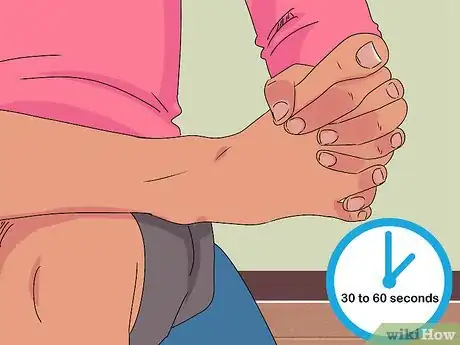
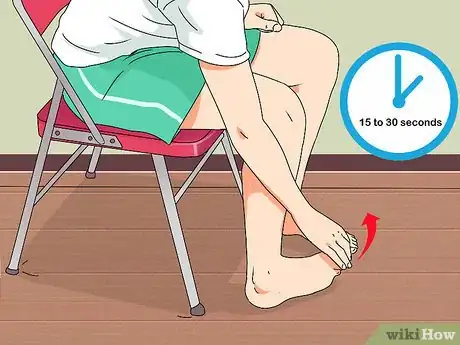
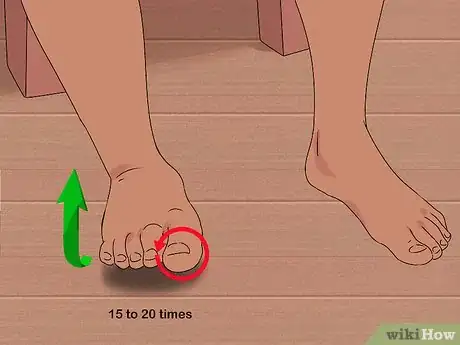

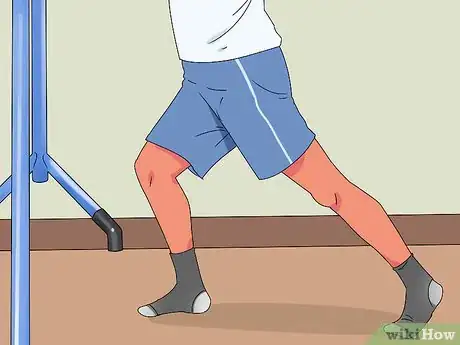
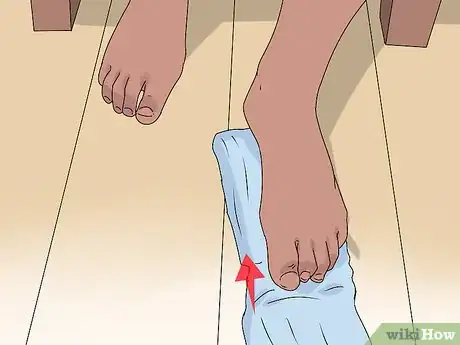
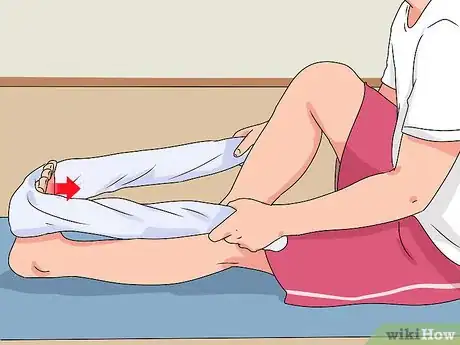

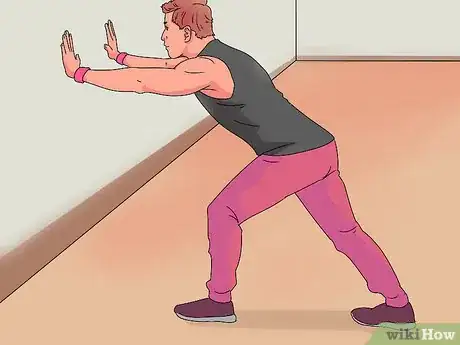
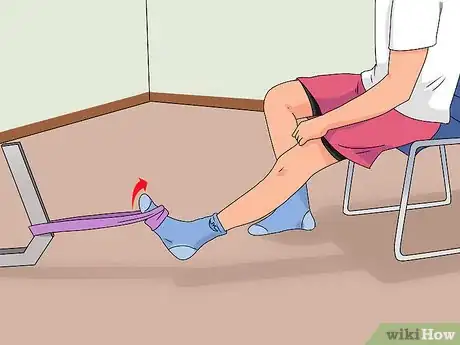
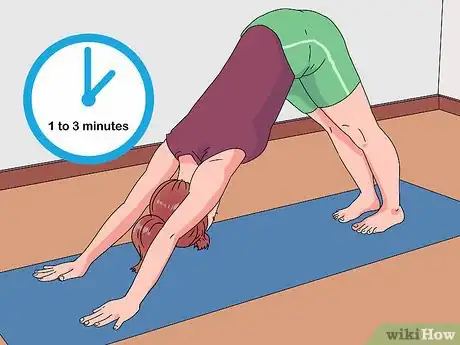
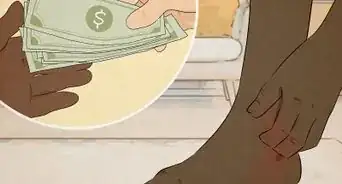
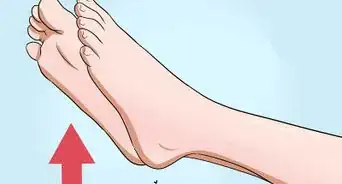
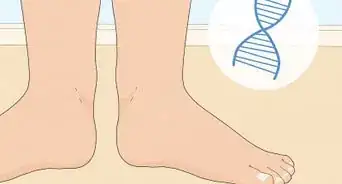

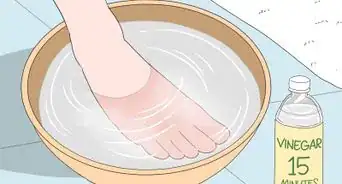
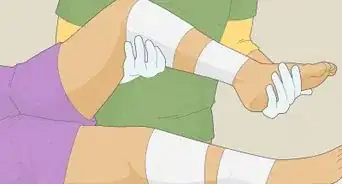
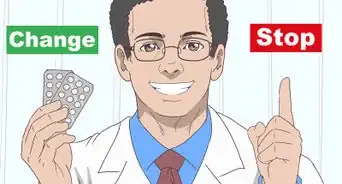














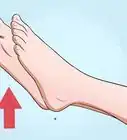





































Medical Disclaimer
The content of this article is not intended to be a substitute for professional medical advice, examination, diagnosis, or treatment. You should always contact your doctor or other qualified healthcare professional before starting, changing, or stopping any kind of health treatment.
Read More...